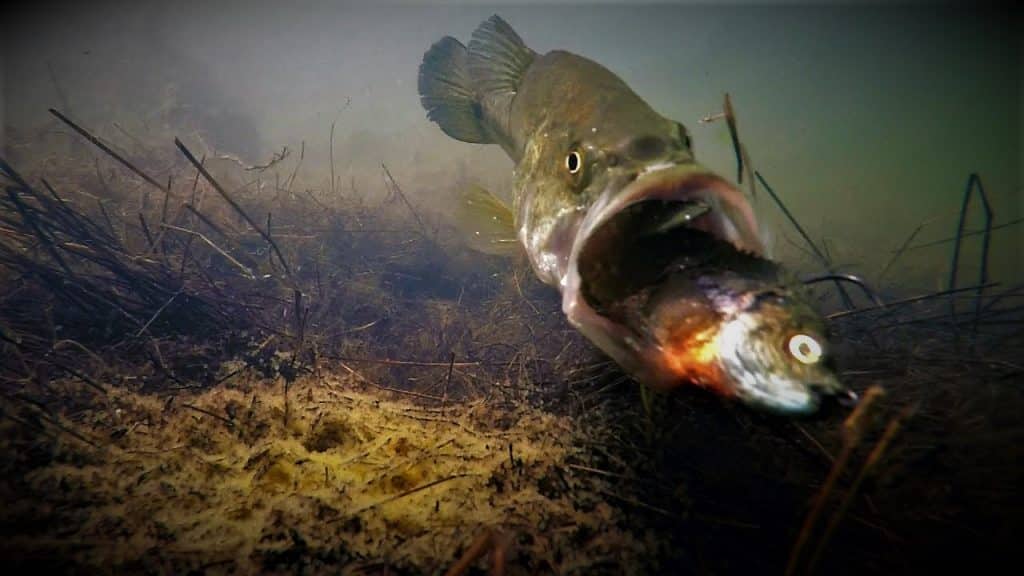During the post spawn period it’s really important to keep an eye out for bluegill beds. When the water gets around 70° bass have a tendency to raid the bluegill beds. Stalking bass through these beds is crucial for post spawn success. With the right tools you’ll be catching more bass in no time.
How To Catch Post Spawn Bass in Bluegill Beds
Every bass fisherman should have a good pair of polarized sunglasses. Wear them all day regardless of how bright the sun is. Even on cloudy days they will cutback glare and make it easier to spot bluegill beds. Keep an eye out for the little doughnuts that are sure sign of bluegill breeding grounds. They should look like tire stacked next to each other covered by loose sand. It should be the same areas you had success with during the bass season.
After the bass spawn bluegill will move into their breeding grounds. It’s time for bluegill to do their thing and have a little romance. It’s the perfect meal for female bass that are trying to recover from the spawn. The spawn takes a serious toll on the body’s of both male and female bass. They won’t eat for weeks only attacking what goes into their breeding grounds. When they’re done the females will move out and recuperate a little bit and return for an easy meal. They are almost guaranteed to return a few days after the spawn for some easy meals.
What to Look for
What I’m really looking for is key pieces of cover that act as strategic ambush points for these recovering bass. Look for big logs in the water, and brush right next to some shoreline grass. Bass will come out and cruise through the perimeter of the bluegill beds and hide in the undergrowth. It can slide back and relax without having to travel far for a meal.
Bait Selection
Bait selection is fairly simple, there are several options that you can choose from. I like to go between a chatter bait, traditional swim jig, a bluegill colored or red colored hollow body frog or a Texas rig creature bait. My go to the past couple years has been start with top water then switch to a Texas rig with a zoom bait brush hog.
Most of the time you will have success with the top water bait but sometimes you have to make a switch. When Bass seem to be coming up and swatting at your lure make a switch. When they’re a little less active a little tiny creature bait might be the way to go. I like to pair the zoom bait brush hog on a heavy water hook. I do make some casts, but I tend to do more skip casts and role casts.
Where To Find Blue Gill Beds
While I explained what to look for when spotting bluegill beds, I didn’t really explain where to look. You’re going to want to look in the same kinds of areas where you look for bass beds. I really like looking for south facing banks that get a lot of sun throughout the day. Any type of bank that starts to level out after a deep transition is sure to have bluegill beds. When you get to a spot that’s completely flat look for brush and other likely hiding spots.
This really works well, because when the females are recuperating they like to transition between the beds and deeper water. Working an area that has a little bit of both cover and Deepwater will save you a lot of frustration. Female bass tend to suspend in areas of cover under grass then move out to adjacent Deepwater. You can stay in one spot and catch a ton of fish.
How Long To Work These Beds
Most of the time bluegill beds are going to be in the same location as the bass spawning grounds. So you’ll be able to work the same area through most of the bass spawning season and then through the bluegill spawn. Make sure you work this area after the water temperature reaches 70° and higher. This the perfect time for bluegill to start their spawn. Not only will you have great success catching bass will probably catch a lot of spawning bluegill as well.

